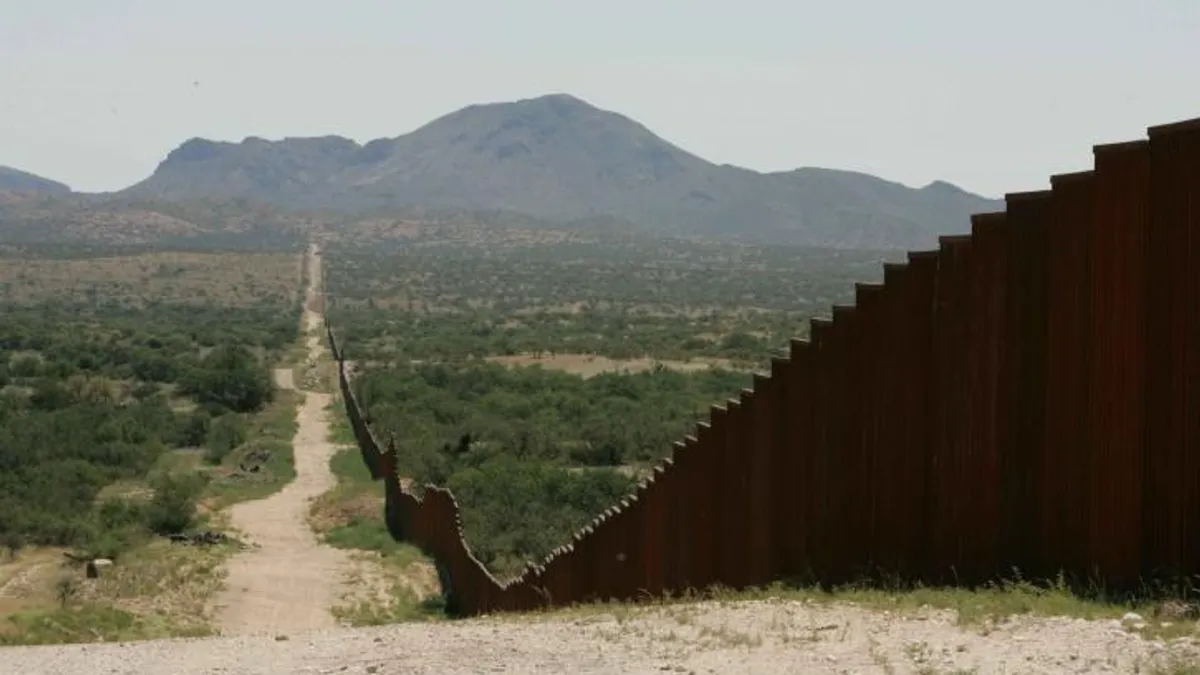To see how this announcement fits into the timeline of border wall construction, click here.
Dive Brief:
- The U.S. Department of Homeland Security on Oct. 10 published a notice in the Federal Register of its decision to waive any regulations that might interfere with the expedited construction or repair of border wall/fence sections in Cameron County, Texas. The department issued a similar notice on Oct. 11 for work in Hidalgo County, Texas.
- The Cameron County scope of work includes 11 automated border wall gates and related improvements to the PF225 Bollard Fence in the U.S. Customs and Border Patrol's Rio Grande Valley Sector, which is reportedly an area with a large number of illegal entries into the U.S. In Hidalgo County, also in the Rio Grande Valley Sector, the department issued a release that said the scope of work includes a 14-mile wall project. The newly built parts of the wall will close the gaps left unfinished during construction in 2008.
- The department said that although it has waived the requirement to abide by a host of rules that any other developer would be required to follow, "it remains committed to environmental stewardship" and will work with other state and federal agencies to make sure that "impacts to the environment, wildlife, and cultural and historic artifacts" are kept to a minimum.
Dive Insight:
The DHS has gone round and round with environmentalists and authorities in California and Texas regarding similar waivers for other segments of border wall construction, but courts have cleared the way for work to continue. However, conservation groups filed a petition with the U.S. Supreme Court to review a lower court's decision to allow the department to waive environmental, health and safety regulations.
Border wall projects have been piecemeal thus far amid funding shortfalls and an August determination by the U.S. Government Accountability Office that border wall prototypes completed last year were deficient in several areas. GAO said that Customs and Border Patrol tests did not take into consideration the potential costs of some project-specific conditions like building on different types of topographies and negotiating land acquisitions with private owners. The report determined that all four concrete prototypes would present construction crews with extensive challenges and that the four barrier-style models would come with moderate to substantial hurdles.
Customs and Border Patrol disagreed with the GAO's assertion that its original analysis was insufficient and said that it should conduct a second study.













